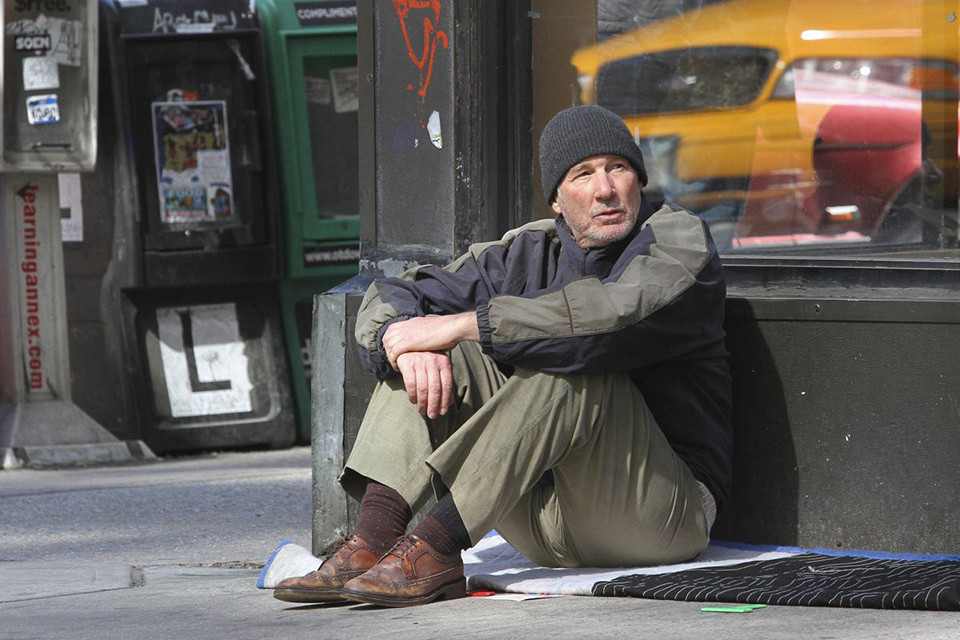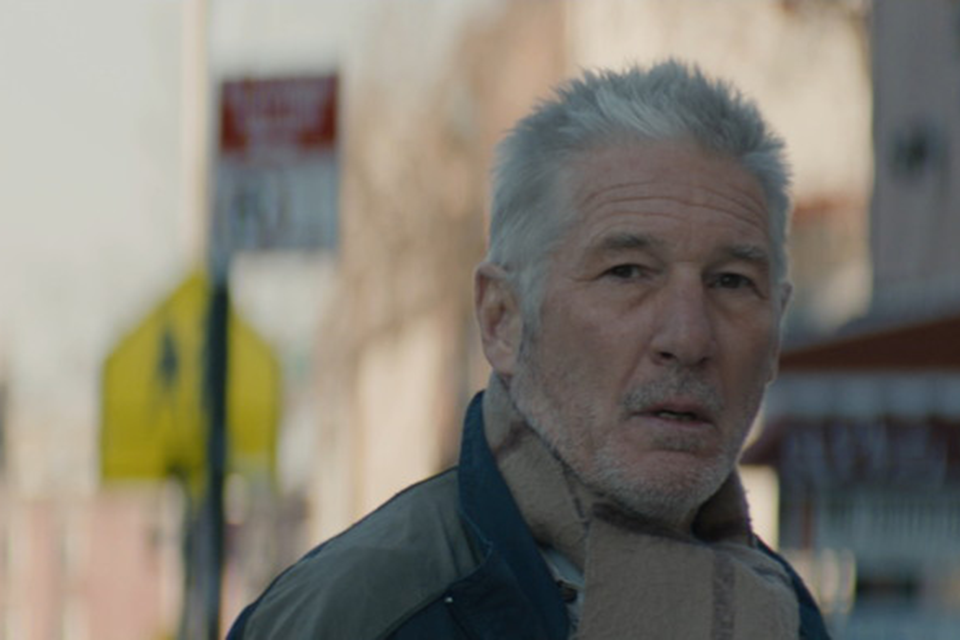
Review: Time Out of Mind
That which is crooked cannot be made straight,” a resident of a New York City men’s shelter says in Time Out of Mind, quoting Ecclesiastes to describe a flawed shelter system. But the man he addresses, who is haunted by a faltering memory, is also troubled by feelings of his own worthlessness. In contrast to Woody Harrelson’s violent Los Angeles cop in Rampart (11), George (Richard Gere) is a more mysterious, and more ordinary, figure.

As in his earlier work with Oren Moverman, DP Bobby Bukowski’s evocative visuals play a crucial role in Time Out of Mind, partly drawing inspiration from the street photography of Saul Leiter, with its inventive compositions, radiant color, and emphasis on transparent layers and blurred or reflected images. Many scenes were shot from a distance, often through windows. Also evoking both immersion in a chaotic city and estrangement from its residents, the sound design is a dense aural patchwork that incorporates countless snippets of conversations from unseen passersby.
As the film begins, a property manager (Steve Buscemi) finds George sleeping in the bathtub of a New York City apartment whose occupant, a woman named Sheila whom George knew, has been evicted. Roused and sent packing, George passes through front doors with iron grillwork into the streets, where he is harassed and exhausted. Eventually, he finds himself at an intake center for homeless men; he answers questions, waits, and finds more restless sleep in fluorescent-lit warrens noisy with arguments and coughing.

When the chatterbox Dixon (a poignant Ben Vereen) gloms onto George, they mirror each other’s anxiety, isolation, and approaching old age, forming a prickly alliance. George tries to make contact with his estranged daughter, Maggie (Jena Malone), and by the end of the film a clear enough picture of his state of mind has emerged that when he reads aloud from an official letter, it is far more affecting than an emotional discussion he has earlier with Dixon about whether they are homeless.
Time Out of Mind unfolds slowly, but mostly rewards the viewer’s patience. One scene features a long take in one of the purgatory-like bureaucratic offices where George and Dixon hope to make progress toward getting documents that will help them to secure benefits and an affirmation that they exist. Dixon leans close in the crowded room, yammering. George listens in silence, but subtle shifts in his expression reflect thoughts that have been nudged free by Dixon’s flood of words.
Gere’s performance is movingly understated, as in a scene where George panhandles with a knit hat pulled down to his brows, his handsome face unrecognizable but his jitteriness and blank desperation utterly convincing. Before Sheila vanished, he had used his leading-man looks to induce women to take him in, an option that has expired. He seduces one woman who collects cans (Kyra Sedgwick), but the morning after he finds himself alone and exposed, his aging body being photographed by laughing children with cell phones.

Digital devices are omnipresent in the world from which George has been shut out, reinforcing the sense of distance evoked by the visuals and marking a divide between those who are staying afloat and those who are sinking into oblivion. From Buscemi’s character focused on emptying and renovating apartments, to a nurse who allows George to rest in a hospital waiting room, people talk on or gaze at their phones while he seeks their attention. A pay phone George uses with frustration seems like a primitive object amid this realm of layers, reflections, fleeting passersby, and disembodied voices.
That fragmentation and disconnect contribute as much to making the story seem of the current moment as the crisis of homelessness in New York. Time Out of Mind asks viewers to consider George’s situation both from his point of view and a seemingly unbridgeable remove—a knotty but worthwhile challenge.







